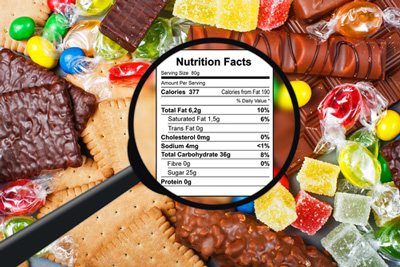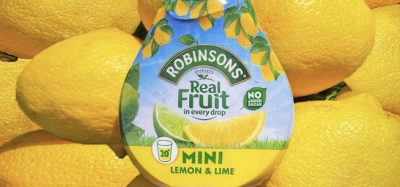FDA updates nutritional facts label for packaged foods
- Like
- Digg
- Del
- Tumblr
- VKontakte
- Buffer
- Love This
- Odnoklassniki
- Meneame
- Blogger
- Amazon
- Yahoo Mail
- Gmail
- AOL
- Newsvine
- HackerNews
- Evernote
- MySpace
- Mail.ru
- Viadeo
- Line
- Comments
- Yummly
- SMS
- Viber
- Telegram
- Subscribe
- Skype
- Facebook Messenger
- Kakao
- LiveJournal
- Yammer
- Edgar
- Fintel
- Mix
- Instapaper
- Copy Link
Posted: 23 May 2016 | Victoria White, Digital Content Producer | No comments yet
The FDA says that modernising the nutritional facts present on packaged foods will help people make informed decisions about the foods they eat…


The US Food and Drug Administration (FDA) has taken a major step in making sure consumers have updated nutritional information for most packaged foods sold in the US.


Modernising the nutritional facts present on packaged foods will help people make informed decisions about the foods they eat and feed their families.
Commenting on the news, First Lady Michelle Obama said: “I am thrilled that the FDA has finalised a new and improved Nutrition Facts label that will be on food products nationwide. This is going to make a real difference in providing families across the country the information they need to make healthy choices.”
FDA Commissioner Robert Califf, M.D., added: “For more than 20 years, Americans have relied on the Nutrition Facts label as a leading source of information regarding calories, fat and other nutrients to help them understand more about the foods they eat in a day. The updated label makes improvements to this valuable resource so consumers can make more informed food choices – one of the most important steps a person can take to reduce the risk of heart disease and obesity.”
The new Nutrition Facts label will include the following an updated design to highlight “calories” and “servings,” two important elements in making informed food choices.
Labels will have requirements for serving sizes that more closely reflect the amounts of food that people currently eat. What and how much people eat and drink has changed since the last serving size requirements were published in 1993. By law, the Nutrition Labelling and Education Act, requires that serving sizes be based on what people actually eat.
Manufacturers have until 2018 to introduce the new label
The new labels will include a declaration of grams and a percent daily value (%DV) for “added sugars” to help consumers know how much sugar has been added to the product. “Dual column” labels will indicate both “per serving” and “per package” calorie and nutrition information for certain multi-serving food products that could be consumed in one sitting or multiple sittings. With dual-column labels available, people will be able to easily understand how many calories and nutrients they are getting if they eat or drink the entire package/unit at one time.
For packages that are between one and two servings, the calories and other nutrients will be required to be labelled as one serving because people typically consume it in one sitting.
The new labels will also include updated daily values for nutrients like sodium, dietary fiber and vitamin D, consistent with Institute of Medicine recommendations and the 2015-2020 Dietary Guidelines for Americans.
In addition, labelling will include a declaration of Vitamin D and potassium that will include the actual gram amount, in addition to the %DV. These are nutrients that some people are not getting enough of, which puts them at higher risk for chronic disease. The %DV for calcium and iron will continue to be required, along with the actual gram amount. Vitamins A and C will no longer be required because deficiencies of these vitamins are rare, but these nutrients can be included on a voluntary basis.
“Calories from Fat” will be removed because research shows the type of fat is more important than the amount. “Total Fat,” “Saturated Fat,” and “Trans Fat” will continue to be required.
Most food manufacturers will be required to use the new label by 26 July 2018. Manufacturers with less than $10 million in annual food sales will have an additional year to comply with the new rules. The FDA plans to conduct outreach and education efforts on the new requirements.









